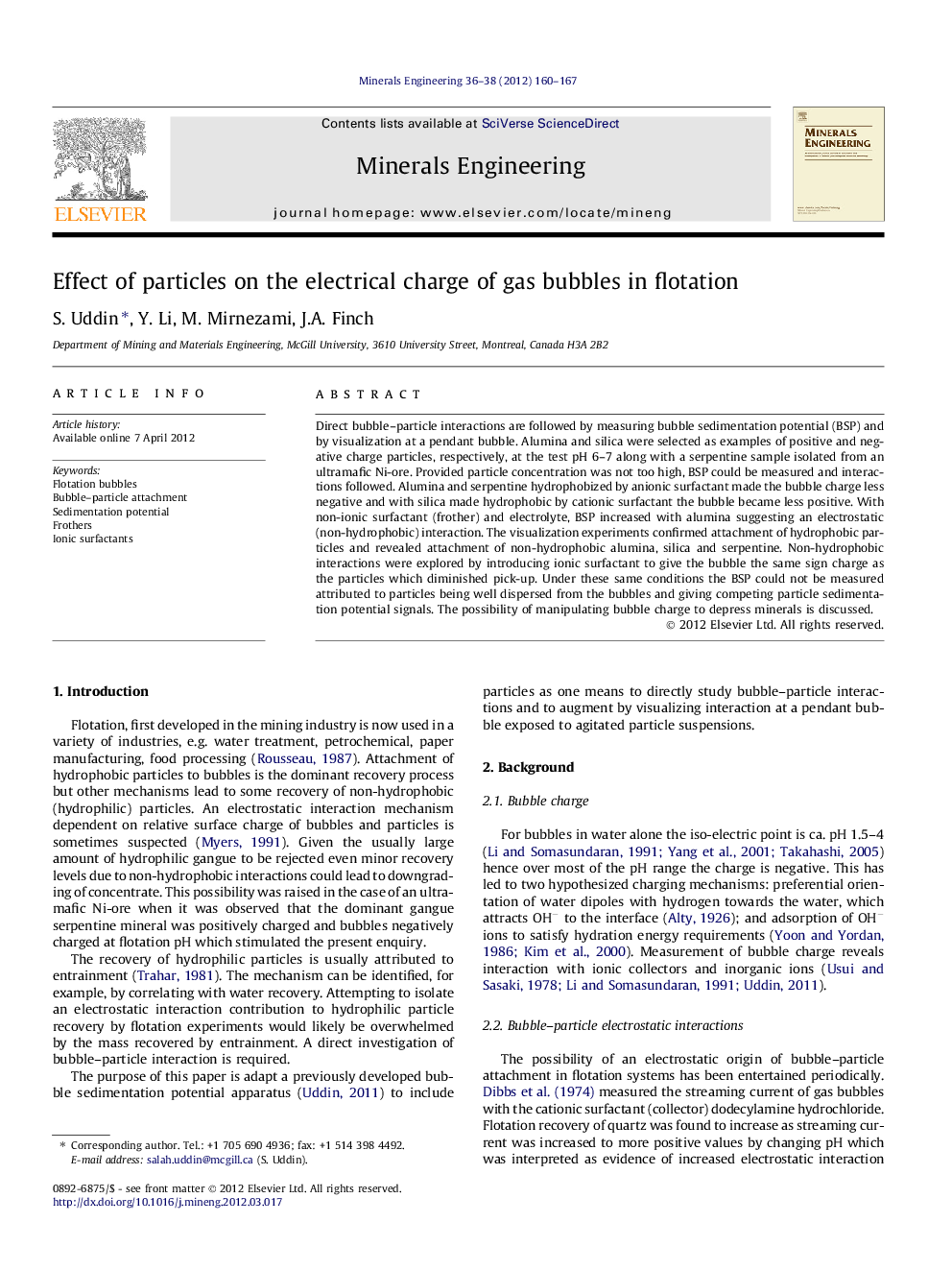| Article ID | Journal | Published Year | Pages | File Type |
|---|---|---|---|---|
| 233533 | Minerals Engineering | 2012 | 8 Pages |
Direct bubble–particle interactions are followed by measuring bubble sedimentation potential (BSP) and by visualization at a pendant bubble. Alumina and silica were selected as examples of positive and negative charge particles, respectively, at the test pH 6–7 along with a serpentine sample isolated from an ultramafic Ni-ore. Provided particle concentration was not too high, BSP could be measured and interactions followed. Alumina and serpentine hydrophobized by anionic surfactant made the bubble charge less negative and with silica made hydrophobic by cationic surfactant the bubble became less positive. With non-ionic surfactant (frother) and electrolyte, BSP increased with alumina suggesting an electrostatic (non-hydrophobic) interaction. The visualization experiments confirmed attachment of hydrophobic particles and revealed attachment of non-hydrophobic alumina, silica and serpentine. Non-hydrophobic interactions were explored by introducing ionic surfactant to give the bubble the same sign charge as the particles which diminished pick-up. Under these same conditions the BSP could not be measured attributed to particles being well dispersed from the bubbles and giving competing particle sedimentation potential signals. The possibility of manipulating bubble charge to depress minerals is discussed.
Graphical abstractFigure optionsDownload full-size imageDownload as PowerPoint slideHighlights► Bubble sedimentation potential (BSP) apparatus modified to include particles. ► Determined effect on BSP of alumina, silica and clinochrysotile. ► BSP change significant when particles made hydrophobic by ionic surfactants. ► BSP indicated some interaction with non-hydrophobic particles. ► Using pendant bubble, attachment of non-hydrophobic particles observed.
